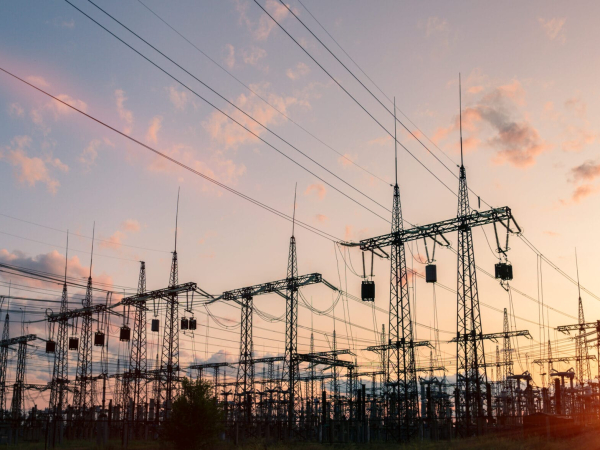Energy & UtilitiesOptimize Technology
Guarding the grid: Cybersecurity in solar and renewable energy
Instead of implementing static, one-size-fits-all solutions in an environment where threats are continuously evolving,…
Read article

Energy & Utilities Improve Operations
02/01/2022
by Andrea Jacaman and Lauren Beistegui

Over the past decade, a number of high-profile events involving utility infrastructure has brought national attention to the utilities industry and a growing concern for its assets – our country’s infrastructure is aging. These events have been varied across the industry, including water boil orders, gas shortages impacting power generation, and inadequate equipment for temperature snaps, which are occurring at a time when the utilities industry is facing economic pressure from suppliers and increasing demand from customers. Modernization has become a key investment priority to maintain safety and reduce the risk of reoccurring issues. Most recently, the U.S. Congress passed a one trillion-dollar bill that includes $550 billion of funding for investment in our roads, bridges, rail transit, safe water, power grid, broadband internet, and more.
The future holds promise for infrastructure projects that will make actionable change but updating decades old infrastructure can sound like a daunting task with ripple effects across the enterprise – impacting equipment, technology, business processes, and people. Here are some areas to consider as you think about your initial steps.
It is tempting to start right away and update portions of the infrastructure that are failing the most often and most spectacularly. However, doing so prematurely could be a waste of time and resources. For the natural gas industry alone, considering the average 5,600 miles of gas mains replaced each year over a recent decade, it would take another 230 years to complete a replacement of every pipe.
It is imperative that you start by defining your strategy for determining what will be repaired, replaced, or upgraded. The type of equipment, age, location, and system history are some examples of factors to consider. These strategic conversations must include team members from all the impacted areas – industry subject matter experts, business operations, compliance, operational technology, information technology, architecture, data, security, and networking teams – to name a few.
As you define your strategy, consider these areas of impact:
Once you define your strategy, a next critical step is to assess your organization’s readiness for change. Identifying the key areas of the organization affected by the upcoming infrastructure changes is essential to guiding and prioritizing the activities required to manage the organizational changes to your people, processes, and technology.
When large scale infrastructure updates are undertaken, it could take many years for the full-scale rollout to occur and decommissioning of old equipment or systems to take place. A clear definition of how the old and the new infrastructure, system, people, and processes will operate in parallel is key to managing those changes.
As you identify the changes you want to make to your existing infrastructure, how will you roll out the changes across your service territory? Spending planning time up front to think about the program’s objectives, defining the guiding principles of the overarching program with clearly set priorities, and laying out individual workstreams impacted with assigned owners and timelines for discovery will lead to more efficient use of resources in the long run.
Updating aging infrastructure will be a multi-year effort and must be approached with that in mind. Ideally, planning all changes to a given portion of the infrastructure to occur at the same time would be most efficient. Realistically, this rarely occurs and must be taken into account during the planning.
During the rollout, remember that some systems, processes, and equipment will have to be run in parallel to maintain both until the rollout is complete. As you think through your rollout plan, identify these areas that will require some amount of parallel processing, equipment, or people to maintain both until the rollout is complete. In today’s climate of supply shortages in raw materials, equipment, and skilled labor, a smooth rollout will also depend on identifying your needs, planning far ahead in order to have the resources you need in a timely manner.
As you consider updates to your infrastructure, a study of the regulatory requirements should be performed to determine if any changes you are making to improve your infrastructure place you into a new category of compliance. Identifying new areas of compliance up front will enhance your security and safety position by considering these requirements early in the design process.
Reviewing current standards and those that are subject to future enforcement early in the program might allow you to advance changes to your security and safety measures to align with current and soon-to-arrive regulations.
Now what? With its broad reach across the organization and much information to consider, begin to illustrate the roadmap ahead by performing a current state assessment of your infrastructure landscape and resources.
Ask the big questions to define where you want to go next:
Replacing your aging utility infrastructure will require sponsorship at the highest levels of the organization, dedicated resources of people, equipment and monetary investment, collaboration from disparate areas of the organization, and consistent communication across the program. Changes won’t happen overnight – replacing aging infrastructure in a significant way is a multi-year, multi-discipline effort that will provide for dependable, safe, and secure delivery of utilities to our communities for decades to come.
If you are facing challenges prioritizing the many efforts required to modernize your aging infrastructure and would like to hear more about our client work in this area, please connect with a Sendero consultant so we can help. To stay informed on industry trends and emerging solutions, sign up for our newsletter using the “Contact Us” form at the top of this page.
Business insights
Energy & UtilitiesOptimize Technology
Instead of implementing static, one-size-fits-all solutions in an environment where threats are continuously evolving,…
Read article

Energy & Utilities
With ERCOT’s Real-Time Co-optimization plus Batteries initiative, a shift in how energy and ancillary services are…
Read article

Energy & UtilitiesOptimize Technology
New rules aimed at reducing emissions, enhancing grid reliability, and protecting consumer data are being introduced at…
Read article
